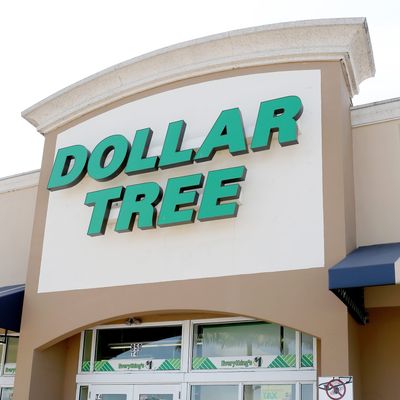
This morning, Dollar Tree announced that it would acquire its rival Family Dollar for about $8.5 billion in cash and stock, merging two of the country’s biggest cheapest-of-the-cheap chains and creating the tantalizing possibility of a store called “Dollar Dollar.”
The acquisition looks like a boon for both sides: Dollar Tree buys access to a big pool of lower-income customers; Family Dollar sells its way out of its current slump at a healthy margin. Still, the acquisition underscores how the low-end retail boom — one of the major retail trends of the past half-decade — has stalled out. The recession created a lot of new customers for dollar stores to cater to. But the recovery has failed to give those customers any new dollars to spend.
When the economy pitched south in 2008, stores serving very low-income consumers — Walmart, McDonald’s, Dollar Tree — did relatively well. The ranks of the poor swelled. Middle-income families cut back. Middle-of-the-road retailers like Target and Sears struggled with falling sales as cash-strapped customers migrated to the stores offering bottom-of-the-barrel prices. With unemployment still high and wage growth stuck in neutral, the low-end retail category continued to outperform through the sluggish recovery.
But of late, times have gotten tougher in the deep-discount segment of the market. This is from Family Dollar’s second-quarter earnings report:
Family Dollar’s profit came in at 85 cents per share, a figure that fell four cents shy of the analyst consensus. Same-store sales for the quarter declined 1.8%, which the company said was the result of fewer customer transactions.
“Our results continue to reflect the economic challenges facing our core customer and an intense competitive environment,” Family Dollar chairman and CEO Howard Levine said in a statement Thursday morning.
Here’s a snippet from a recent interview with a top Walmart executive, who just days ago said he is stepping down:
In an interview with Reuters, Bill Simon, the president and chief executive officer of Wal-Mart U.S., said the improving employment picture had so far failed to raise cash register receipts at the retailer’s U.S. stores.
“It’s really hard to see in our business today … that it’s gotten any better,” he said. “We’ve reached a point where it’s not getting any better but it’s not getting any worse – at least for the middle (class) and down.”
A nugget from McDonald’s:
The world’s largest restaurant company cited “ongoing broad-based challenges” on Monday as it posted a 1% decline in May in sales for U.S. restaurants open at least 13 months. That marked the sixth month in the past seven when sales dropped in its largest market by number of restaurants. For April, McDonald’s said U.S. same-store sales were flat from a year earlier.
And this is from Rent-a-Center’s chief executive officer, announcing that revenues were up just a smidge in the first quarter of this year:
“Customer demand was down in the Core U.S. segment as expected, but operational improvements to focus on the quality of sales.”
So what’s happening in the consumer economy that might help explain the malaise? The answer is “not much” — that is, not much is happening, and that’s hurting retailers. Unemployment is dropping, but consumers from the very low end of the market all the way through the middle remain skittish. Wages aren’t rising. Government support for strapped households has faded. As a result, retailers are struggling mightily to juice sales.
The low end of the market is also seeing more competition for the penny-pinching customer, a result of the expansion of brick-and-mortar dollar stores through the Great Recession, retailers across the board offering lower-cost options and amped-up competition from online giants like Amazon. Dollar General is soaking up some of Walmart’s sales. Taco Bell is eating McDonald’s lunch. Different retailers are taking different pieces of the pie, but the pie is not getting much bigger.
Of course, in each stalled-out business’s case, there are a number of other factors at work; it is possible to overstate the macroeconomic case. The freezing cold winter hurt Walmart and other big-box stores. McDonald’s is facing rising food costs. Family Dollar have expanded too far, too fast. But the economy just isn’t quite working in these stores’ favor like it once was, either.
For now, the better bet for retail investors seems to be the still-booming high end of the market, where rising stock and real-estate values continue to support a surge in spending on yachts, sports cars, start-ups, and on and on. Or, as my colleague Kevin Roose quipped, it just might be time to start the dime store.





























